Tesla could be a $10,000 stock in a decade, says longtime bull Ron Baron
Introduction & Market Context
Proximar Seafood AS (OB:PROXI) presented its Q1 2025 results on May 16, highlighting its first-mover advantage in the Japanese salmon market. The Norwegian company operates a land-based recirculating aquaculture system (RAS) facility near Mount Fuji, strategically positioned to serve the greater Tokyo area with its population of approximately 38 million people.
The company has established a long-term sales and distribution agreement with Marubeni Corporation and began its first commercial sales in September 2024. Proximar’s local production model aims to capitalize on Japan’s substantial salmon import market while avoiding the high transportation costs faced by competitors.
As shown in the following slide highlighting Proximar’s strategic position in Japan:

Quarterly Performance Highlights
Proximar reported significant revenue growth in Q1 2025, with revenue and other income reaching NOK 30.2 million, a substantial increase from the NOK 3.4 million reported in Q4 2024. The company harvested 322 tonnes of salmon during the quarter, achieving an impressive 99.5% superior grade classification with an average harvested weight of approximately 3.1 kg (head-on gutted).
The company achieved premium pricing for its market-size fish, with an average realized price of NOK 97/kg for the year, and approximately NOK 118/kg for salmon weighing over 3kg. Proximar also reported its first export to the Taiwanese market during the quarter, expanding its geographical footprint.
The following slide summarizes the key highlights from Q1 2025:
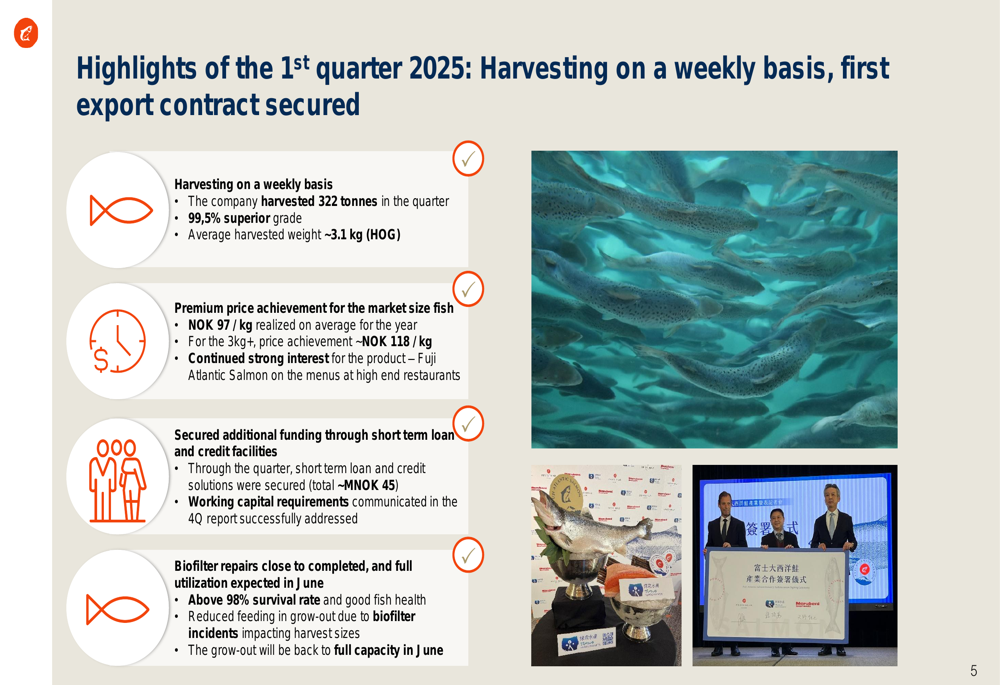
Biomass development continued to show positive trends, with standing biomass increasing to 1,126 tonnes by the end of March 2025, up from 1,058 tonnes at the end of December 2024. The company’s employee count also grew to 63, reflecting the scaling up of operations.
The following performance metrics chart illustrates these trends:
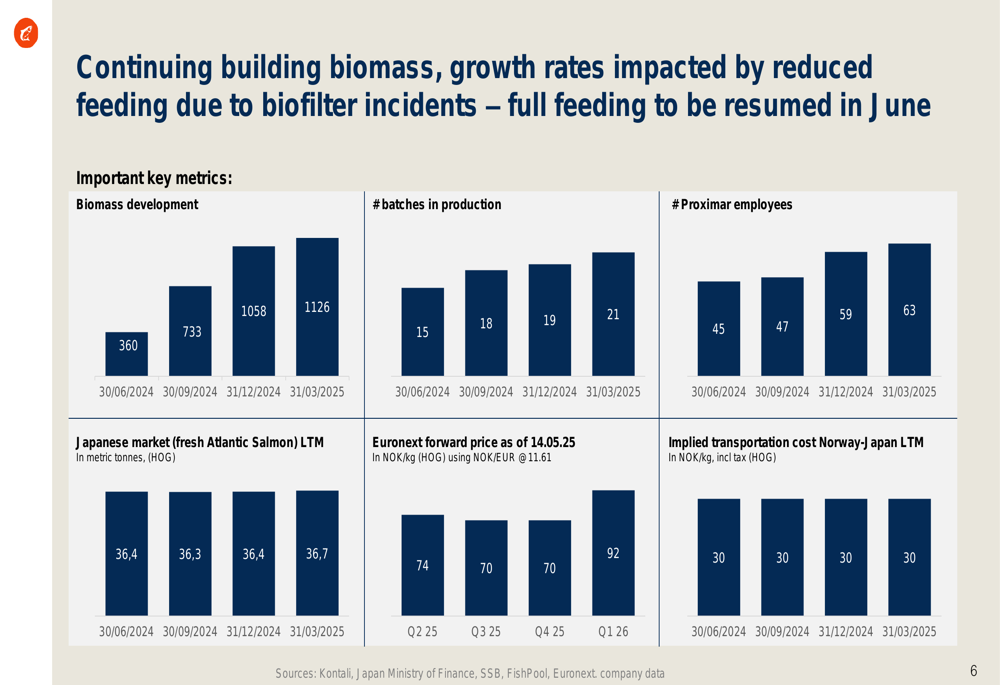
Detailed Financial Analysis
Despite the revenue growth, Proximar continues to operate at a loss as it scales up production. The company reported an adjusted EBITDA of NOK -13.2 million for Q1 2025, compared to NOK -10.3 million in Q4 2024. Earnings before taxes stood at NOK -56.3 million.
The balance sheet shows total assets of approximately NOK 1.59 billion, with equity of NOK 323.8 million, representing a 20% equity share. The equity position decreased by approximately NOK 75 million during the quarter. Almost all of the company’s debt is now classified as current, with a refinancing process ongoing.
To address working capital needs, Proximar secured additional funding through short-term loans and credit facilities totaling approximately NOK 45 million during Q1, with an additional NOK 22 million in working capital financing secured in April.
The financial summary is presented in the following slide:
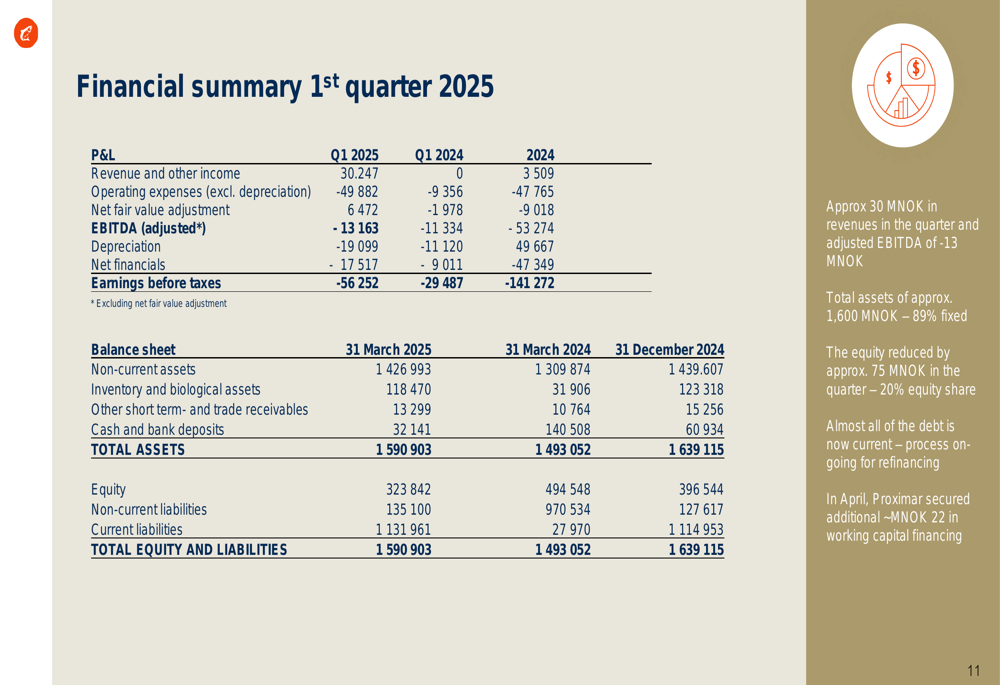
Earnings per share deteriorated to NOK -0.41 in Q1 2025, compared to NOK -0.23 in the same quarter of the previous year, reflecting the ongoing challenges as the company scales up operations.
Strategic Initiatives
A key focus for Proximar has been addressing technical issues with its biofilter system. The company reported that biofilter repairs are nearly completed, with full utilization expected in June. Despite these challenges, fish health remains good with a survival rate above 98%.
The production performance slide details these developments:
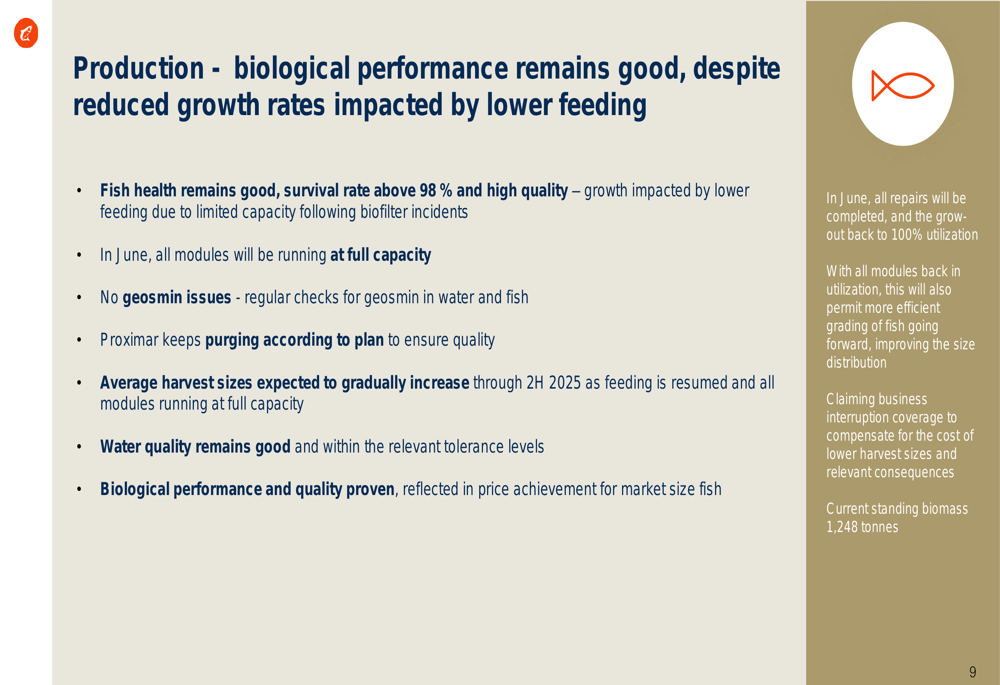
Proximar has begun expanding beyond Japan, with its first export to the Taiwanese market during Q1. The company has received media coverage in both Japan and Taiwan, including on Japanese national TV (NHK) and Taiwanese television, increasing its visibility in these markets.
The company’s competitive advantage remains strong, as import prices for Norwegian salmon to Japan continue to support Proximar’s local production model. The cost of importing Norwegian fresh Atlantic salmon to Japan includes not only the base price but also a 3.5% import tax and local handling costs, creating a significant cost advantage for Proximar’s locally produced salmon.
Forward-Looking Statements
Looking ahead to the remainder of 2025, Proximar has revised its harvest volume expectations downward to 3,000-3,300 tonnes HOG for the full year, compared to the 3,500-3,800 tonnes projected in the previous quarter. This adjustment reflects the impact of reduced feeding following the biofilter incidents.
Despite these short-term challenges, the company maintains that its long-term outlook remains intact. Proximar expects Q2 2025 EBITDA to come in at around zero, indicating a path toward profitability as operations stabilize.
The following slide outlines the company’s outlook for 2025:
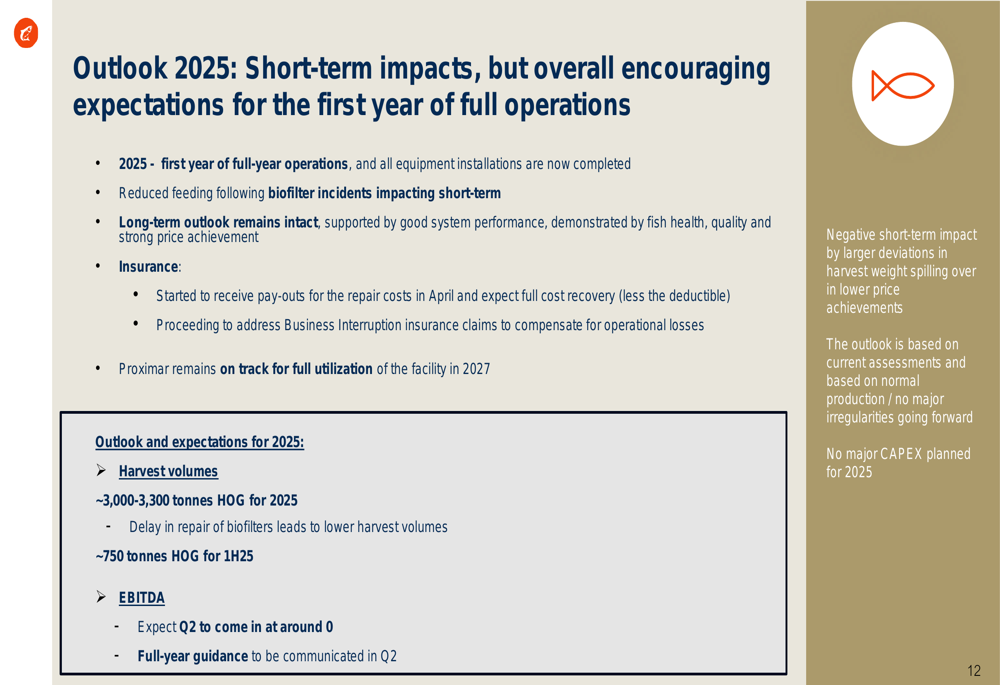
Proximar emphasized that its facility continues to demonstrate good and stable performance, with high-quality production evidenced by the 99.5% superior grade classification of harvested fish. The company believes it is uniquely positioned in the Japanese market, having completed its facility at what it describes as "very attractive CAPEX levels."
The following slide summarizes the robust fundamentals and system performance:
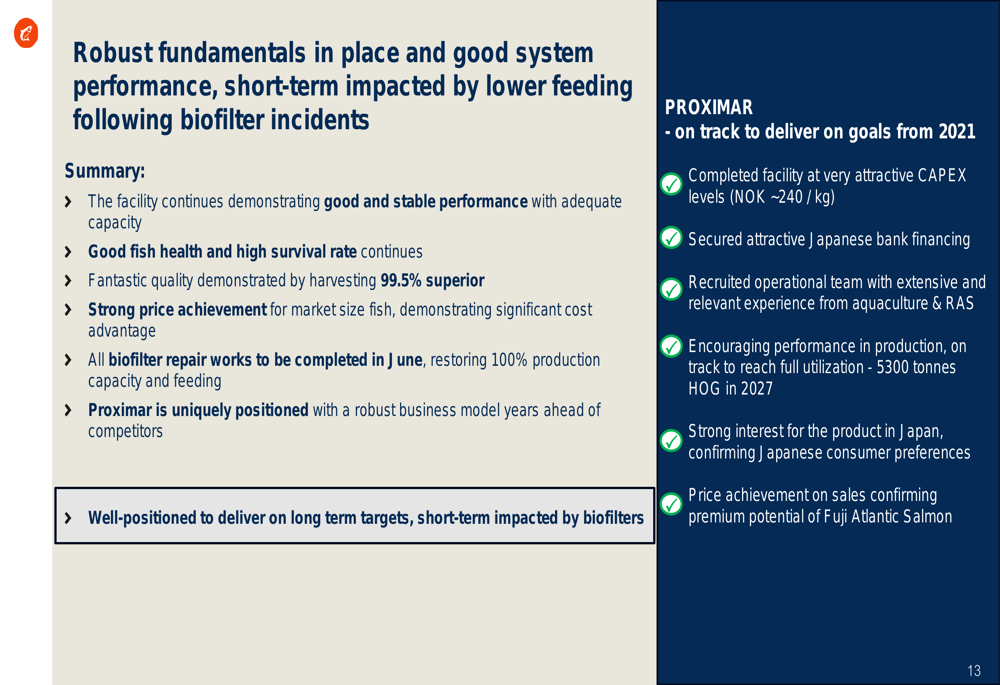
As Proximar continues to address its short-term challenges while building on its strategic advantages in the Japanese market, investors will be watching closely to see if the company can achieve its goal of EBITDA breakeven in Q2 2025 and successfully complete its refinancing efforts to strengthen its financial position.
Full presentation:
This article was generated with the support of AI and reviewed by an editor. For more information see our T&C.
